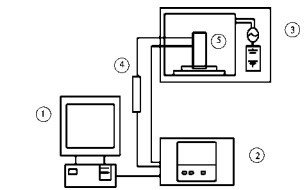Study on Drying Technology of Plum Vegetable

ABSTRACT: Mei is a specialty of Xizhou, Guangdong Province. It has the functions of eliminating stomach, relieving blood pressure, etc. It is loved by the public. At present, the drying process of plum vegetable is mostly white whale sun drying, a small part of which is dried by hot air, but its drying quality is poor. This paper summarized the microwave drying equipment of plum in order to provide useful reference for the improvement of plum vegetable drying technology.
Key words: plum vegetable microwave drying; hot air drying; vacuum freeze drying

Mei vegetable, mustard plant family and genera, mainly produced in Huizhou, Guangdong Province, according to legend called Mei Xiangu seed, Mei vegetable is a traditional famous dish in Guangdong, belongs to pickled food. Mei cuisine originated in Lingnan and spread to Beijing. It became a palace food, also known as "tribute dish". So far, the Cantonese recipe of "Mei cuisine with meat" still exists widely in various hotels in Beijing.
Plum cuisine is made by the local people in Guangdong through many processes, such as cooling, drying, selecting, floating salt, etc. Its color is golden, fragrant, sweet and refreshing. It has the characteristics of not cold, not dry, not wet and not hot.
In the township centered on Aipi, Huizhou, the area of plum vegetable cultivation has reached more than 60,000 mu, and the annual output has exceeded 100,000 tons. The area of plum vegetable cultivation in the town is about 14,000 mu. The total output can reach 22,000 tons. The income of plum vegetable accounts for about half of the total agricultural output value, and it has become the pillar industry of the town.
Plum vegetable has the health functions of stomach-strengthening, digestion, blood pressure-lowering and lipid-lowering. It has been approved by the Food Administration of the United States and is designated as "natural healthy food".
After testing by the Laboratory Center of South China Agricultural University, it was found that the ingredients were 5.7% sugar and 5.6% protein, and contained seven essential trace elements such as vitamins, amino acids and zinc, magnesium and potassium.
Zinc plays an extremely important role in human growth, reproductive genetics, immunity, endocrine and other important physiological processes. Magnesium plays an important role in regulating heart activity. Potassium can regulate the appropriate osmotic pressure in cells and acid-base balance in body fluids, and participate in the metabolism of sugar and protein in cells.